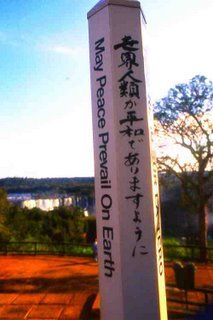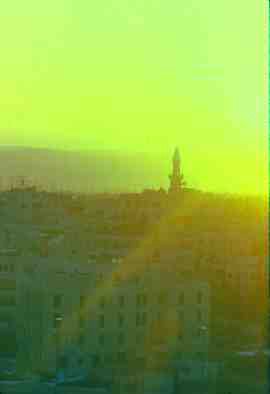
We’ve made plans for a post-Christmas jaunt to Manhattan. Marriott reward points pledged toward a room at the posh-for-us East Side Lexington Avenue property up the street from the Chrysler Building. Theater tickets bought and paid for (ouch). Spamalot, “a new musical lovingly ripped off from the motion picture” and featuring David Hyde Pierce and Tim Curry, was sold out. I’ll have to wait until our next trip to hear “Bring out your deaaad” and “Bring me a..a...a....SHRUBBERY!” live on stage. Wicked, my second choice, was sold out as well.
So, we’re seeing The Producers. I hope the kids, at a hundred bucks a head, can find the humor in “Springtime for Hitler.” We’ll see. We take in a show whenever we go to New York, and we’ve had great luck – Cats, Les Miserables, Lion King, Phantom of the Opera, the Rockettes’ Christmas Spectacular, a dark and edgy Oklahoma. Only one clunker so far: Mamma Mia. You need a submarine to plumb the depths of its plot’s inanity. An excruciating waste of time and money. Truly painful. Abba says, “Take a Chance on Me.” My advice? Don't.
This trip, there’ll be something new to do at Rockefeller Center (above). Closed since 1986, the observation deck atop the GE Building at 30 Rockefeller Plaza has reopened to the public. Fitted out with Art Deco vents and stacks to give visitors the sense of being on an ocean liner and fleur-de-lis panels encircling the 70-story-high space, the Top of the Rock offers superlative views of Manhattan and environs. The elevators that carried visitors to the top of Rockefeller Center when the deck was first opened in the 1930s have been remade with glass ceilings so visitors can watch their progress as their “Sky Shuttle” shoots 850 feet above New York’s streets.
I can’t wait to get up there. What a view it’ll be. We’ll look out and take in Central Park and the highrise miracle of midtown. We’ll look up and wave to people standing above us at 1,050 feet, ogling New York from the floodlit top of the Empire State Building’s observation deck, just downtown from the Rock. We’ll be two groups of people standing a thousand feet up in the New York sky popping flashblulbs at each other. And marveling at everything beyond and below us.
Consider Ribbons of Highway for the travel lovers on your holiday gift list. Thank you. And there's still time for signed copies. LoriHein.com tells you how to order.







